
It’s thought that nearly 5,000 years ago the people of Egypt and Mesopotamia invented the first writing systems.
A writing system (or script) is a way of visually representing words of a language. This is done by identifying the language’s phonological and morphological units and assigning signs or symbols to them. A script is accompanied by its orthography, which signifies the rules around its usage and the sound it represents.
Does each language have a unique writing system?
There are currently over 7000 languages in existence. It seems logical that each language would have its own unique writing system.
But according to World Writing Systems, there are 293 known writing systems. Of these only 156 are living scripts. This is because languages can become extinct meaning the language and its writing system can be lost.
Of the 156 living scripts, one writing system dominates all others. The Latin script is the most widely used, utilized by a massive 70% of the world’s population!
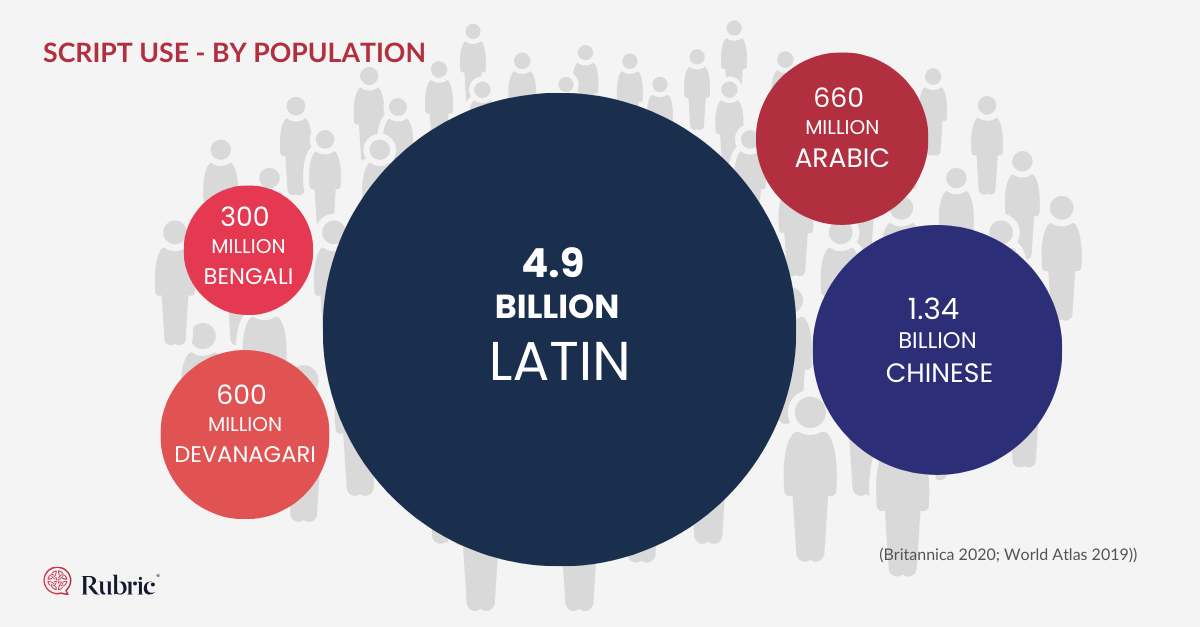
Over 1500 languages use the Latin script. After Latin, the most used writing systems (by the number of languages that use them) are Chinese, Cyrillic, Arabic, Devanagari, and Bengali.
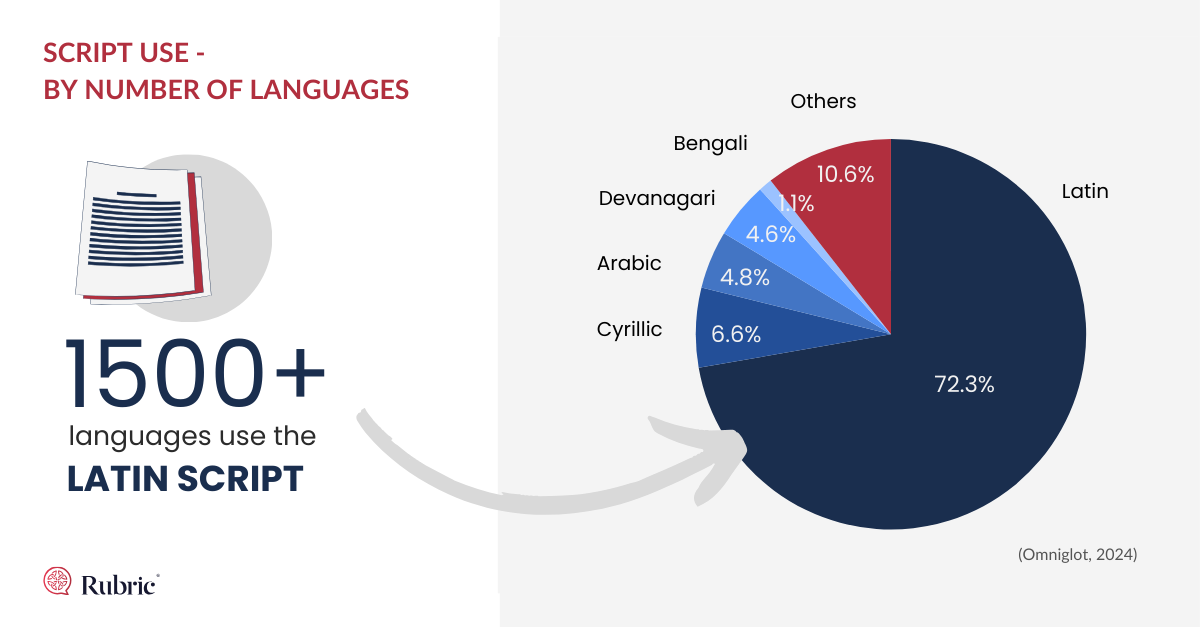
There are some languages that don’t have a written script. These are known as oral languages.
What are the differences between writing systems?
If you compare Korean, Arabic, Chinese, Russian and English it’s obvious that these scripts look nothing alike. They use very different ways of visually representing the language.
Some languages are even read differently. English speakers read from left-to-right, but Arabic and Hebrew are read from right-to-left.
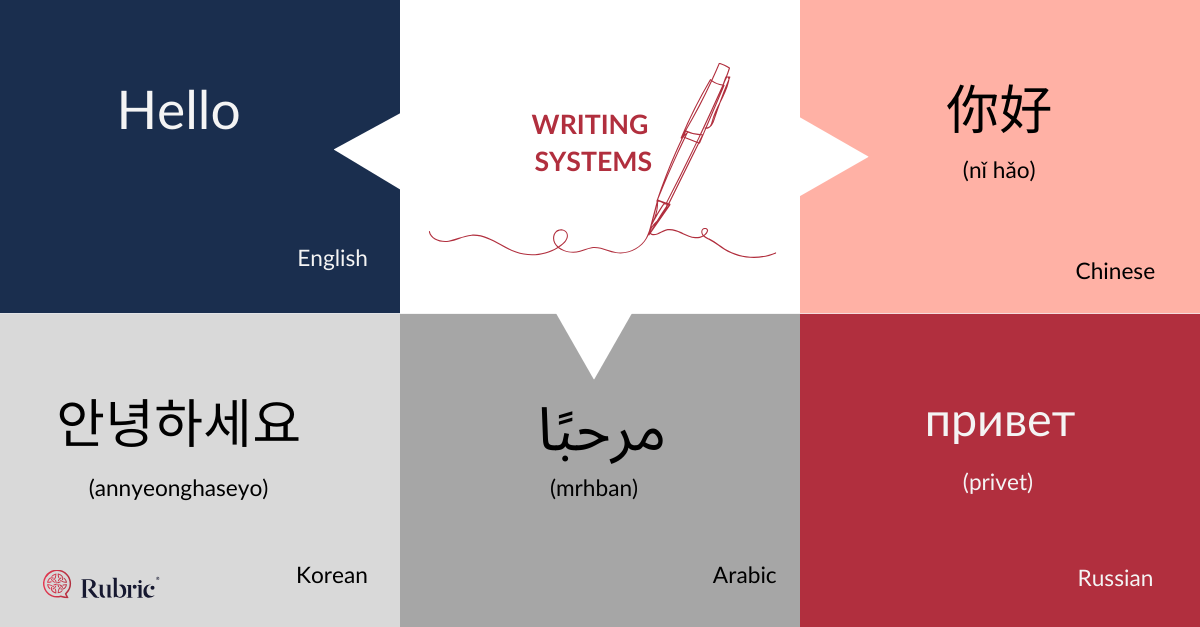
The visual differences are striking, but writing systems are often categorized based on what the symbols represent. Using this method scripts can be classified into six categories:
- Featural Scripts – symbols represent aspects that are neither consonants nor vowels
- Alphabets – symbols represent consonants and vowels
- Abjads – symbols represent only the consonants; vowels are determined by context
- Abugidas – a symbol represents a syllable
- Syllabaries – a symbol represents a syllable, but similar syllables look visually different
- Logographies – each symbol holds a meaning
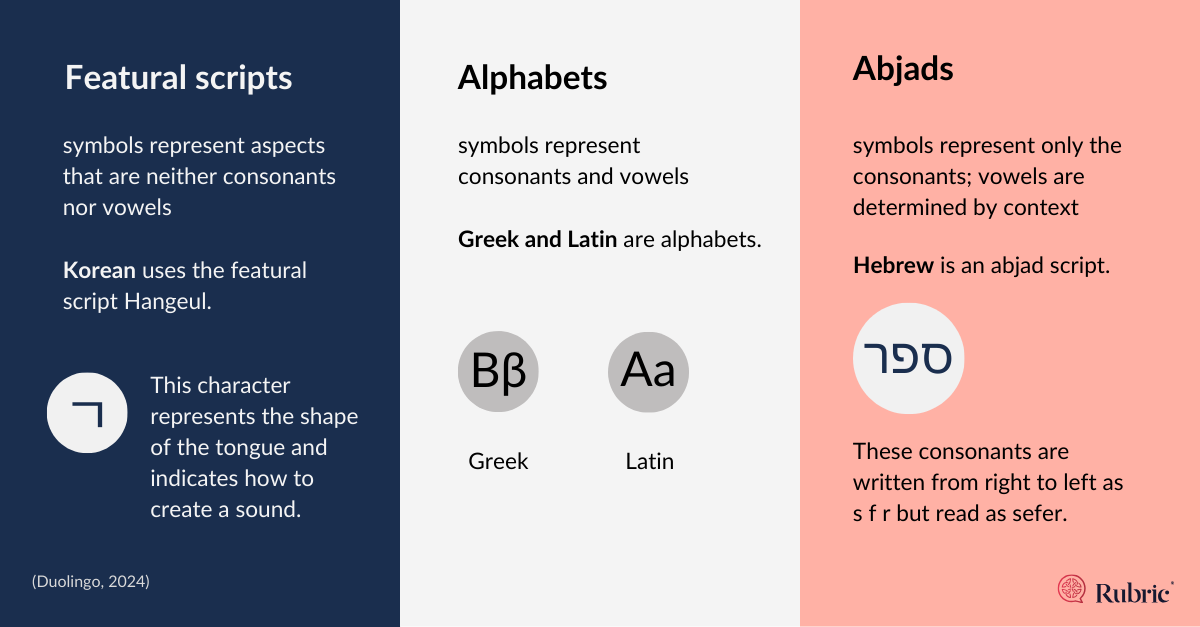
Are all writing systems supported online?
No, not even close!
Writing systems are exactly that—they were designed to be written by hand. But as the world goes digital that is no longer enough.
In order to be supported online a script has to be encoded so that a computer knows how to render (or show) the characters. The Unicode Standard assigns each character in a writing system a unique code. This code is then used on digital devices to render the characters of each writing system.
It’s estimated that up to 131 scripts have yet to be encoded. And encoding a language is just the first step. Ever noticed how the 26 letters of the English language fit perfectly onto a QWERTY keyboard? But how do you input the characters used by other languages? Sometimes the answer is – with difficulty!
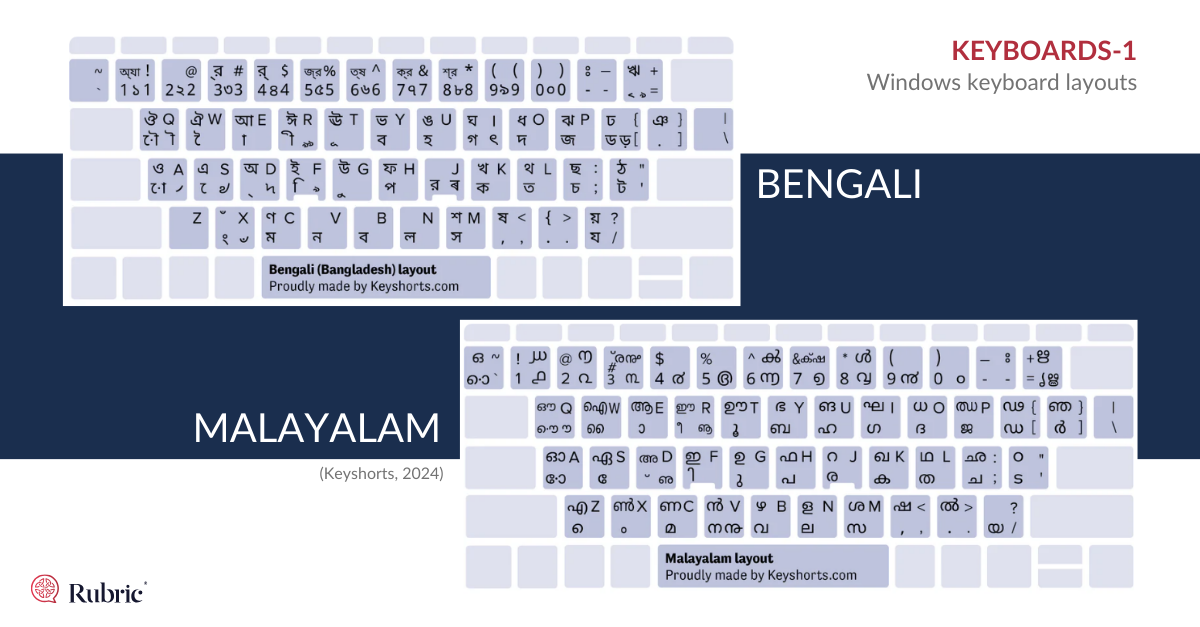
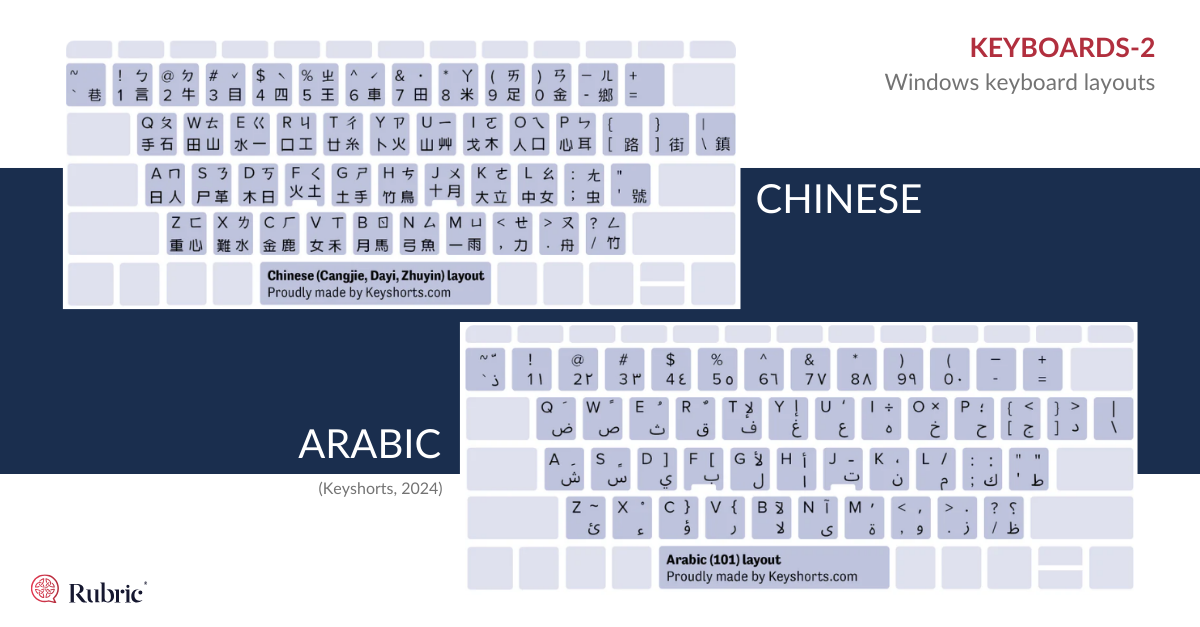
Given it is used by 70% of the population it’s easy to see why the Latin script dominates the digital landscape.
But this dominance puts other languages at a digital disadvantage. By not being a part of the digital space languages are put at risk because speakers are forced to use another language online.
The Unicode Consortium was founded in 1991, and strives to ensure that “everyone in the world should be able to use their own language on phones and computers.” But in reality, digital support for the world’s minority languages still has a long way to go.